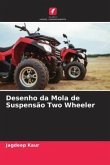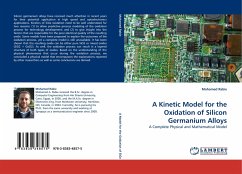This is a computational study of the suspension spring of two Wheeler's followed by modification suggestions. The current methods of calculations of the spring parameters fail to account for the role of the spring pitch in developing stresses. Stresses and deflections are critical factors for designing a sustainable spring and play critical roles in the performance. This book suggests reducing the stresses developed by varying the pitch while proving the correlation between pitch variation and stress production. This is accomplished by geometric modeling of different models of spring and simulating it with applied boundary conditions. The study is further extending to propose ways to reduce stresses in the spring. Finally, the suggested changes can reduce the maximum stresses in the suspension spring components by as much as 50%, from 1963MPa in the original spring to 958MPa in a double coil spring.







